In today’s fast-paced business landscape, achieving product market fit has become a crucial aspect for marketers.
But what exactly is product market fit? Some may argue that it’s hitting a specific revenue milestone or achieving escape velocity, while others see it as the point when customers can’t live without your product.
Regardless of the specific definition, one thing is clear: When you’ve achieved product market fit, momentum takes over and propels your business forward.
In this post, we’ll explore the significance of product market fit for marketers and why it is a driving force behind successful marketing efforts.
Their expertise has helped Nextiva grow its brand and overall business
What Is Product Market Fit?
Product market fit is a term used in the business (and particularly the startup) world to describe the stage where a company’s product or service has successfully met the demands and needs of a specific target market.
In other words, product market fit embodies the alignment between your offering and the desires of your target customers:
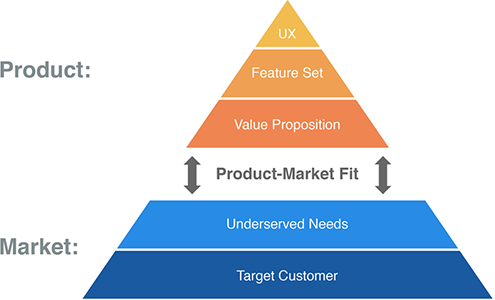
It’s like bringing together the perfect marriage of your product and the market’s demands. Some in the business realm may contend that product market fit signifies hitting a monumental milestone of a million dollars in revenue, a financial feat that symbolizes market acceptance.
Others might relate it to achieving escape velocity, that moment when your product gains enough momentum to propel itself forward, soaring beyond the competition.
But beyond just the numbers, your product market fit thrives in the realm where customers transition from appreciation (of your product) to dependency. It’s when your solution becomes inseparable from their lives, and the thought of parting with it seems inconceivable.
This undying loyalty marks the turning point when at least half of your target audience can’t envision existence without your product’s transformative influence. It’s reminiscent of the dynamic growth hacking days, where innovation and experimentation took center stage, shaping the future of successful businesses:
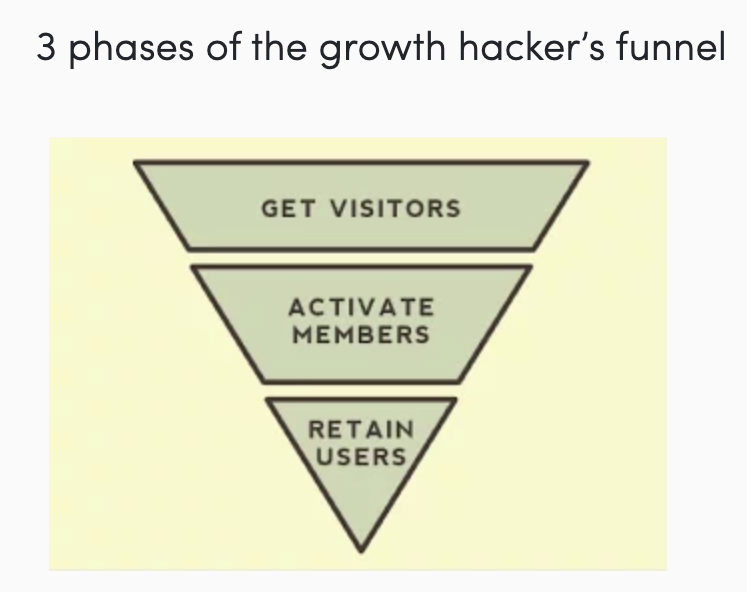
How Product Market Fit Impacts Your Marketing
Product market fit is an absolutely crucial concept that can make or break a business. It refers to the perfect alignment between a product or service and the needs and desires of its target market. When you have a product that resonates with your audience, it can become a powerful catalyst for organic growth and success.
On the other hand, when you have a remarkable product that people genuinely love, it can eventually generate its own momentum. The satisfied customers become enthusiastic brand ambassadors, spreading positive word-of-mouth recommendations to their friends, family, and colleagues.
This organic word-of-mouth marketing is one of the most powerful drivers of growth for successful companies. People love giving and receiving recommendations:
- 83% of people have made at least one word of mouth recommendation.
- 55% make a recommendation on a monthly basis and 30% at least weekly.
- If they had to choose just one source, 50% of people prefer word-of-mouth to get their info.
If your product or service truly delights your customers, they will eagerly share their experiences, leading to increased brand awareness and customer acquisition.
How Product Market Fit Has Helped Big Brands
The success of companies like Airbnb, Uber, Salesforce, Microsoft and Google wasn’t primarily fueled by traditional marketing strategies like SEO or pay-per-click advertising. Instead, their growth came about predominantly through word-of-mouth marketing.
These companies succeeded because they offered products or services that genuinely fulfilled the needs and desires of their target market.
Airbnb and Uber, for example, both disrupted traditional industries (hospitality and transportation, respectively) by leveraging the power of peer-to-peer sharing and technology. Here’s how word of mouth marketing contributed to their success:
- Trust and Credibility: In the early days, both Airbnb and Uber faced skepticism and resistance from potential users who were not accustomed to the idea of sharing their homes or riding with strangers. However, as people heard positive experiences from friends, family or colleagues who had used these services, trust and credibility increased. Personal recommendations from people they knew helped potential users overcome their initial hesitations.
- Social Proof: Word of mouth creates social proof, which is a psychological phenomenon where people tend to make decisions based on the actions of others. As more individuals shared their positive experiences with Airbnb and Uber, it reinforced the perception that these services were safe, reliable and enjoyable. People were more inclined to try them out because others they knew had done so successfully.
- Viral Growth: Both Airbnb and Uber created platforms that were conducive to viral growth. Happy customers shared their experiences on social media, review platforms and in person, reaching a wider audience. This organic sharing led to a snowball effect, where new users signed up, used the service and then became advocates themselves, contributing to the platform’s continuous growth.
- Unique User Experience: Airbnb and Uber provided unique user experiences that were worth talking about. Staying in someone’s home instead of a hotel or getting into a stranger’s car instead of a branded taxi with a seamless mobile app was different from the traditional options, making it a conversation-worthy topic.
- Incentive Programs: Both companies encouraged word-of-mouth marketing through referral programs. They offered incentives, such as discounts or credits, to users who referred new customers to the platform. This strategy not only motivated existing users to spread the word, but also enticed new users to sign up through referrals.
- Localized Impact: Word of mouth is often highly localized. As more hosts and drivers joined Airbnb and Uber in specific cities, the availability and reliability of these services increased, leading to stronger word of mouth within those communities. The more the services were used and appreciated in a particular location, the more new users were attracted to the platform in that area.
- Media Coverage: Word of mouth buzz often attracts media attention. As Airbnb and Uber gained popularity through user stories and experiences, they also received extensive media coverage, which further amplified their reach and influence.
Of course, this doesn’t mean that marketing efforts are futile or unnecessary. On the contrary, marketing remains an essential component of any successful business strategy. It can act as a catalyst to kickstart the word-of-mouth engine and create initial awareness and interest in the product.
But the real momentum and sustained growth come from delivering an exceptional product that customers love.
The Importance of Finding Your Product Market Fit First
One of the most common misconceptions among first-time startup founders is the belief that marketing alone can salvage a business with a lack of product market fit.
It’s easy to believe that aggressive marketing tactics can somehow make up for deficiencies in the product or service, but this approach is bound to lead to disappointment and failure long term.
In reality, marketing serves as a powerful amplifier of a product’s existing value rather than a magical solution to create value out of thin air.
A well-executed marketing campaign can undoubtedly increase visibility, attract potential customers and boost sales. However, if the underlying product or service fails to resonate with the target market or address their needs effectively, all the marketing efforts will fall flat.
Many founders, in their eagerness to succeed, fall into the trap of outsourcing the entire responsibility of building the business to marketing agencies or professionals. They hope that these external entities will somehow work miracles and turn their mediocre product into a massive success story.
Unfortunately, this approach ignores a fundamental and crucial step: discovering and establishing product market fit.
The process of finding product market fit is neither easy nor glamorous, but it is undeniably essential for the long-term viability of a startup. It involves meticulously researching and understanding the target audience’s needs and preferences.
Through feedback, testing and iterations, a startup must fine-tune its offering until it perfectly aligns with what the market demands.
Without a solid product market fit, all the marketing prowess in the world won’t sustain a business in the face of competition and changing market dynamics.
Customers today are discerning and have numerous choices at their disposal. They seek genuine value and meaningful solutions to their problems. If a product fails to deliver on these fronts, no amount of marketing glitz can maintain a facade of success.
Instead of relying solely on marketing, successful founders prioritize the pursuit of product market fit as their primary objective. Once they have achieved this alignment, marketing efforts can then be channeled to amplify the product’s inherent value and reach a wider audience effectively.
Measurements of Product Market Fit
How can you determine if your product has achieved a strong product market fit? There are a few key indicators to consider:
NPS Score
The Net Promoter Score (NPS) is a valuable metric that reflects the loyalty and evangelism of your customers. A higher NPS score indicates that customers are more likely to spread positive word of mouth about your company, contributing to organic growth.
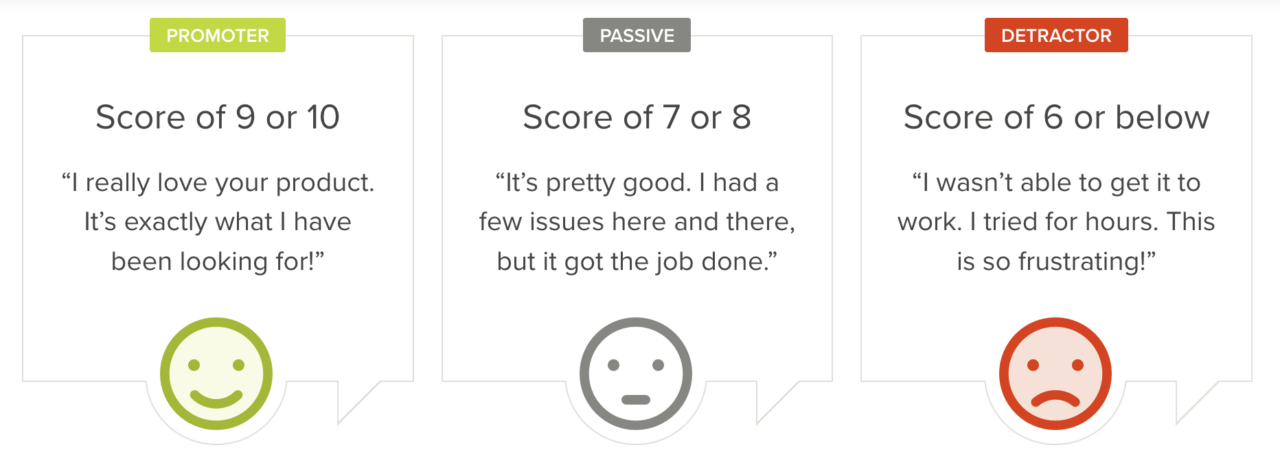
The NPS survey typically asks customers a single question: “On a scale of 0 to 10, how likely are you to recommend our product/service to a friend or colleague?” Based on their responses, customers are categorized into three groups:
- Promoters (Scoring 9-10): These are highly satisfied and loyal customers who are enthusiastic about the company’s offerings. They are likely to recommend the product or service to others, contributing positively to word-of-mouth marketing.
- Passives (Scoring 7-8): Passives are satisfied customers but not as enthusiastic as promoters. They are somewhat loyal but might easily switch to a competitor if offered a better deal or experience. They might recommend the product or service if specifically asked, but they are less likely to do so proactively.
- Detractors (Scoring 0-6): Detractors are unsatisfied customers who are likely to spread negative word of mouth about the company. They may have had a bad experience or found the product or service lacking in some way. Detractors could potentially harm the company’s reputation and hinder its growth.
To calculate the NPS, you subtract the percentage of detractors from the percentage of promoters:
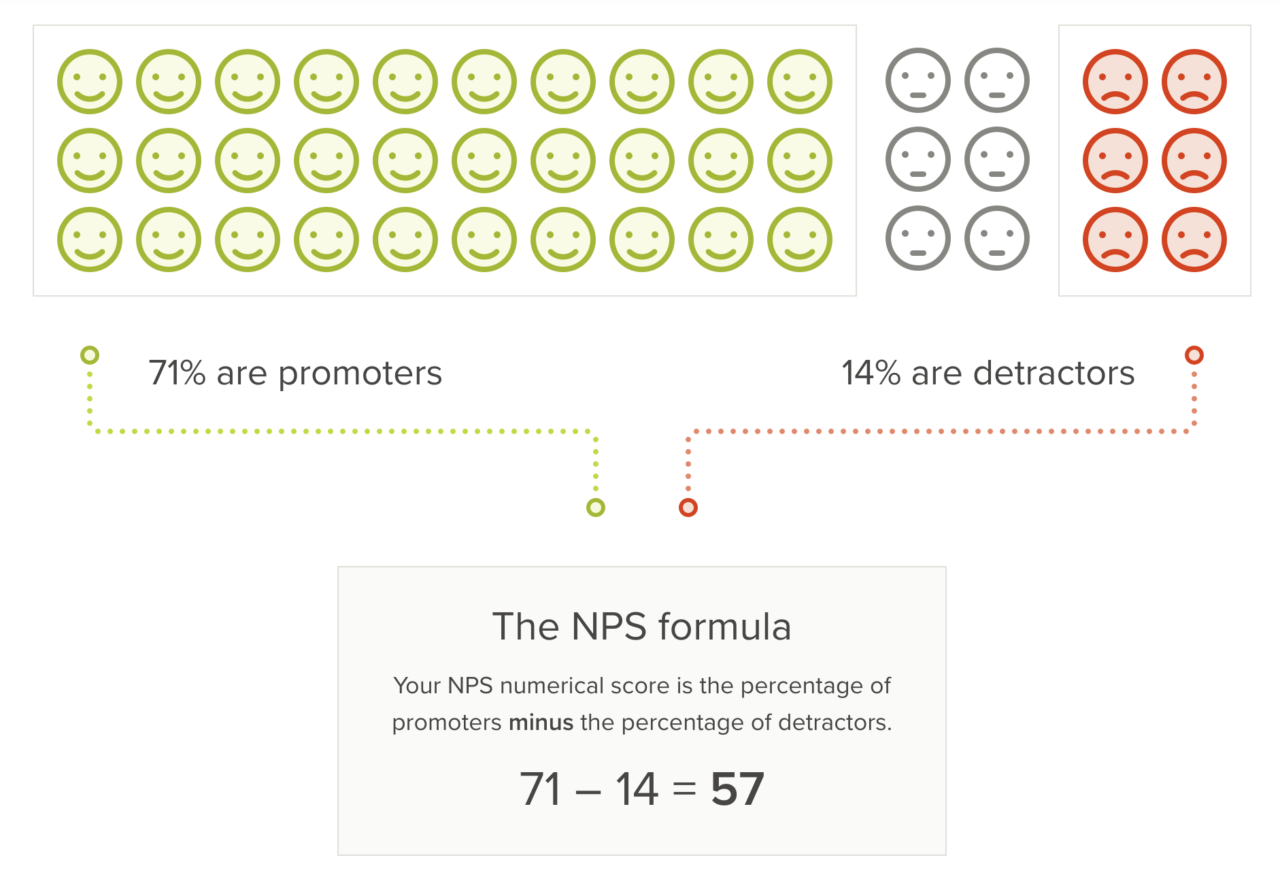
Ranging from -100 to +100, a positive NPS indicates that you have more promoters than detractors, which is a favorable outcome for a company. A negative NPS means that there are more detractors than promoters, indicating areas for improvement in customer satisfaction and loyalty.
Cohort Retention Rates and Churn
If your business operates on a subscription model, closely monitor cohort retention rates and churn.
High retention rates signify that your product is continually delivering value to customers, while low churn rates indicate a strong product market fit.
Imagine you have a subscription-based fitness app. Users pay a monthly fee to access personalized workout plans, nutrition guidance and fitness tracking tools. As your app gains traction, you realize the importance of closely monitoring cohort retention rates and churn to gauge the success and effectiveness of your business model.
Cohort retention rates are the percentage of customers who continue using your app over time within specific cohorts or groups.
👉 To illustrate, let’s consider the first cohort of customers who signed up during the app’s launch month. After three months, you find that 80% of these initial users are still actively engaged with your app.
This high retention rate is encouraging and suggests that the product is consistently delivering value to customers. It indicates that users are satisfied with the features, content and results they are getting, leading them to stay committed to their fitness journey through your app.
On the other hand, churn refers to the rate at which customers discontinue their subscriptions or stop using the app:
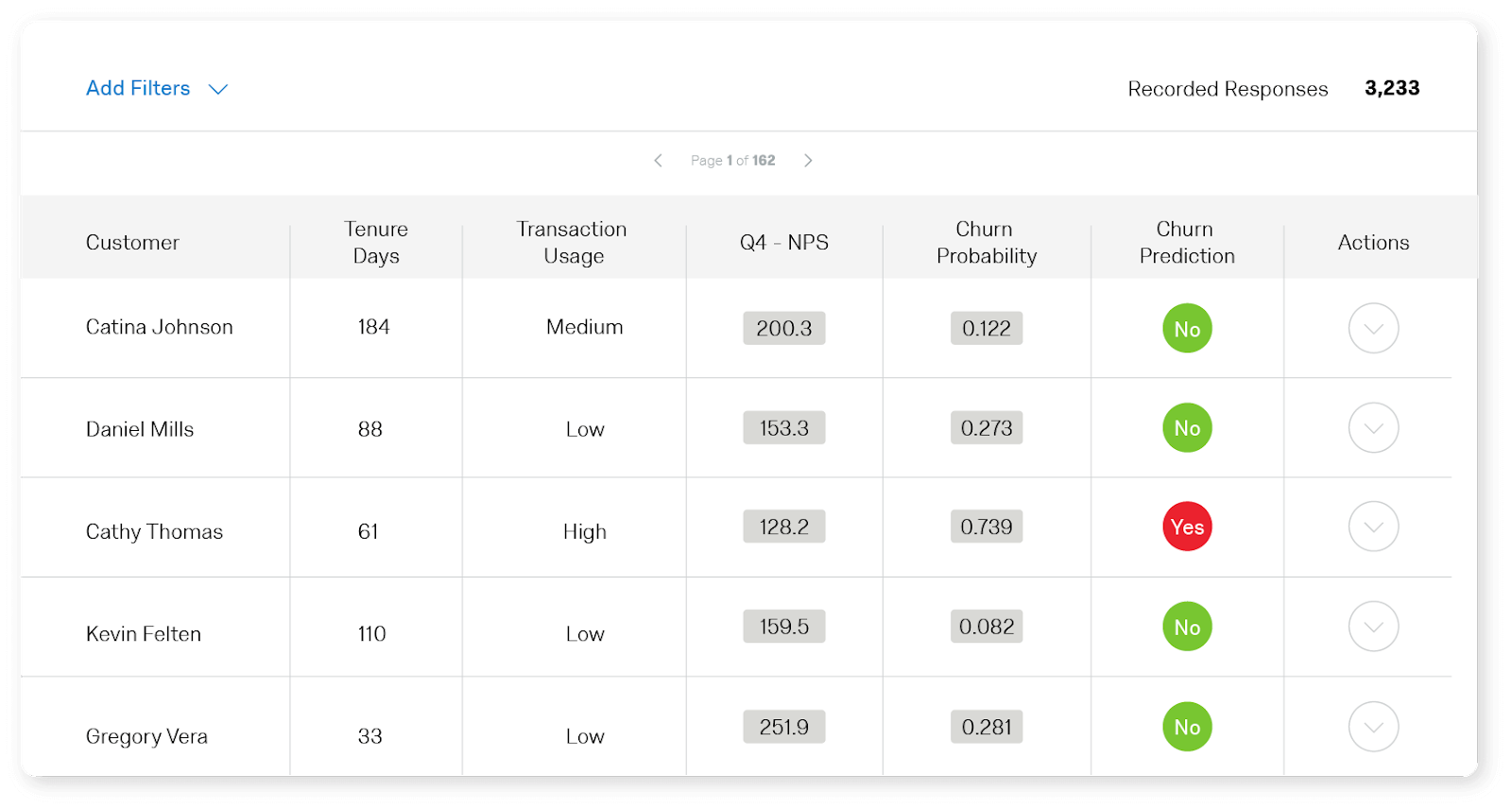
If you notice a low churn rate in your app’s data, say only 5% of users cancel their subscriptions each month, it indicates a strong product market fit. Low churn means that your product is successfully meeting the needs and expectations of your target audience, reducing the likelihood of customers abandoning your platform for alternatives.
👉 To understand the significance of cohort retention rates and churn, let’s analyze a scenario:
Suppose you implement a new feature on your app called “Live Workouts” based on user feedback, offering real-time virtual training sessions with fitness experts. You closely monitor the impact of this addition on cohort retention rates and churn. After three months, you observe a significant improvement in cohort retention rates, jumping from 80% to 90%, and the churn rate drops from 5% to 3%.
These positive changes signify that the “Live Workouts” feature has been well-received by your user base. It has increased user engagement and satisfaction, resulting in more customers staying on board and fewer users discontinuing their subscriptions. The data indicates that the new feature aligns well with your audience’s preferences and adds substantial value to their fitness experience, contributing to a stronger product market fit.
You might even consider expanding the “Live Workouts” concept and exploring other interactive features to further enhance retention rates and minimize churn.
Conversely, you may realize that certain features are not resonating with your audience and decide to refine or remove them to improve product market fit.
Armed with these insights, you can confidently make data-driven decisions that help you refine and iterate the app to make it the best tool it can be for the intended audience.
Now, of course, this is just within the confines of our example, but we hope you can see that this line of logic can be applied to virtually any product in the discovery process of positioning efficiently for the ideal audience.
Related Content: 6 Marketing Lessons We Can All Learn from Amazon
Final Thoughts on Product Market Fit and How It Impacts Your Marketing
Finding the right product market fit for your business is vital for your marketing efforts to truly thrive. Without the proper placement of your products or services, you’ll fall short of delivering your messaging to the people who would be most receptive to your offer.
Remember that marketing is an amplifier of value, not a creator.
Thus, it’s essential to focus on refining your product until it genuinely resonates with your target audience. By analyzing key metrics like NPS score and cohort retention rates, you can gauge the strength of your product market fit and fine-tune your marketing strategies accordingly.
Don’t rush into marketing without ensuring that your product is truly remarkable. Take the time to find your product market fit, and you’ll generate the right marketing results that help your business grow.
If you’re ready to level up your product or service, Single Grain’s marketing growth experts can help!👇
Repurposed from our Marketing School podcast.


